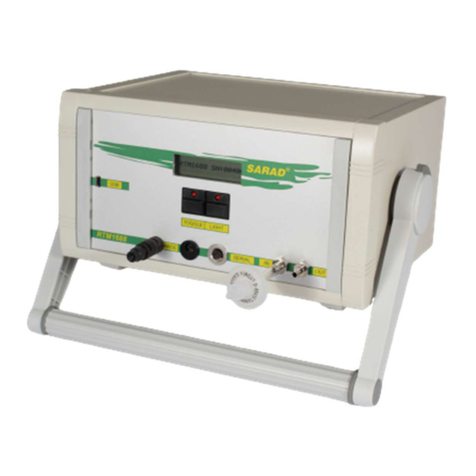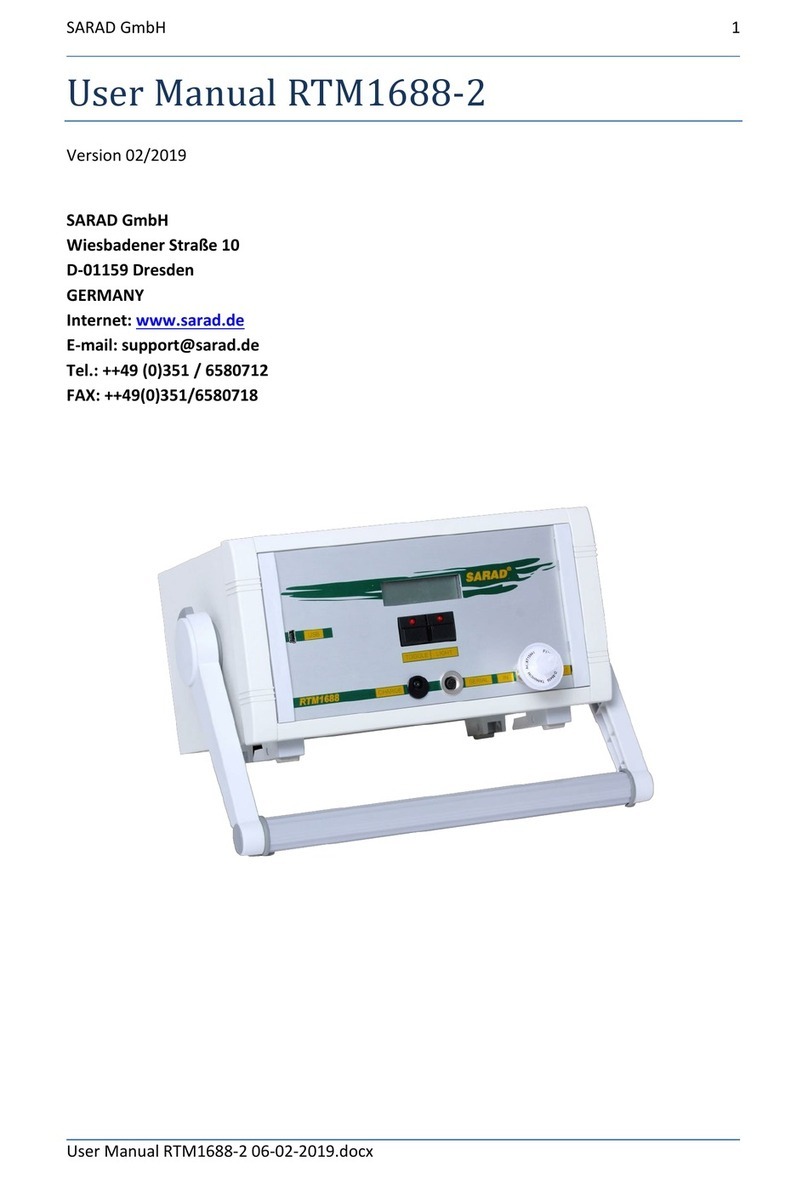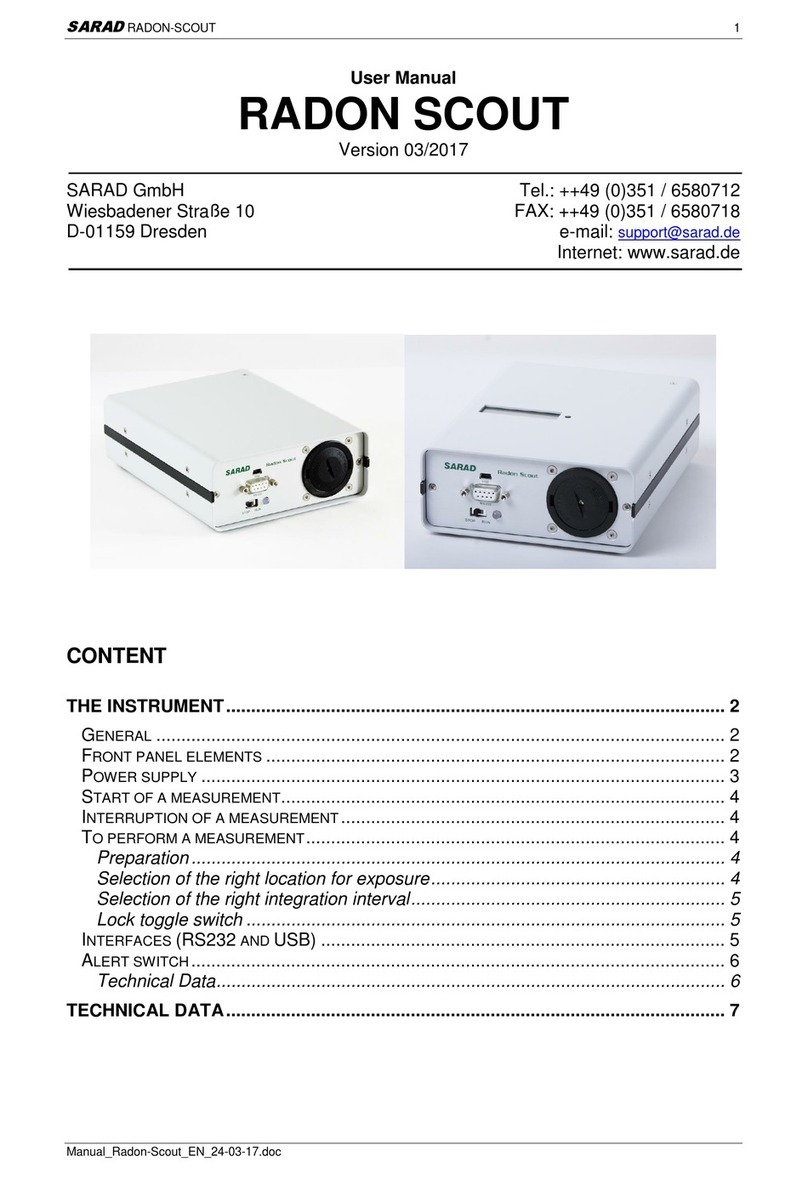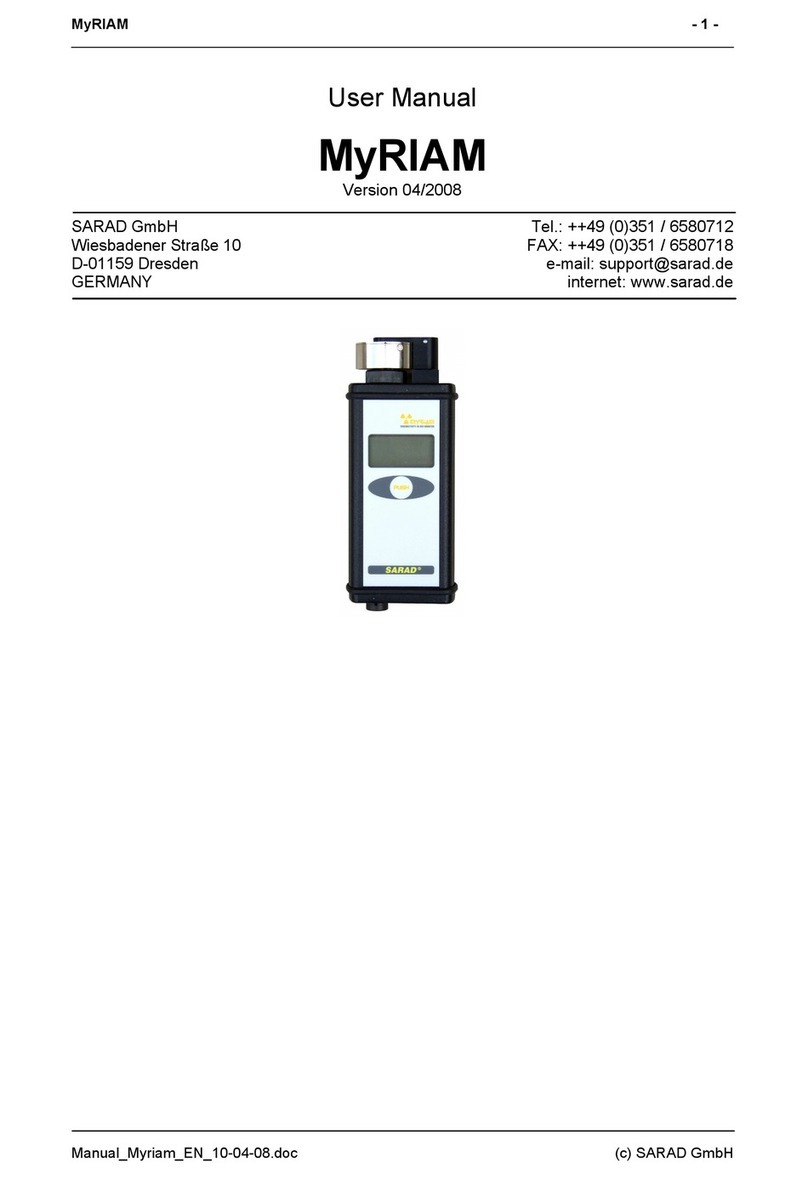SARAD
GmbH
Thoron-Scout
Manual_ThoronScout_EN_02-07-15.doc
9
Statistical Error (for non-mathematicians)
The radioactive decay is a statistical process. That means, even if the Radon concentration
is constant over the time, the number of decays N counted within several intervals of the
same period will be different. N will vary around the mean value of all considered intervals.
Considering an infinite number of intervals would lead to an average which one indicates the
“true” result of N. For a single interval, the value of N will be either below or above the “true”
value. This observed deviation is covered by the term “Statistical Error”.
Therefore, each serious measurement contains beside the calculated Radon value the error
band for a stated confidence interval. The commonly used confidence intervals are 1, 2 or 3
Sigma (σ) which refer to a likelihood of 68.3%, 95.45% and 99.73%.
For example, the correct interpretation of a measured Radon concentration of 780 Bq/m³ with
a statistical 1σerror of ±15% is:
The real “true” Radon concentration lies with a likelihood of 68.3% within the range from 663
Bq/m³ (780 Bq/m³ - 15%) to 897 Bq/m³ (780 Bq/m³ + 15%).
Error Prediction
The relative statistical error E for a chosen confidence interval of k-Sigma can be predicted
from the number of detected counts N by the equation:
E[%] = 100% * k * √(N) / N
The simple consequence is: The higher the number of counts the higher is the accuracy of
the measurement. From the opposite point of view one could ask: How many counts I have
to detect to achieve a predefined uncertainty?
Two items will affect the number of counted decays: The sensitivity of the instrument at the
one hand side and the time period used for counting process (integration interval) on the
other hand.
While the sensitivity is an instrument specific constant, the integration interval may be
expanded to the maximum acceptable value for the desired time resolution of a
measurement series.
The relationship between the measured Radon concentration C
Rn
and the number of counts
N within an integration interval T is:
C
Rn
= N / (T * S)
whereby S represents the Sensitivity of the instrument, given in the unit [cts/(min*kBq/m³)].
The sensitivity using the slow mode is double as high as in the fast mode (see chapter
“Theory of Operation”) and whenever the required response time is more than 2 hours the
slow mode should be selected.
For the following examples a fast mode sensitivity of 4 cts/(min*kBq/m³) shall assumed while
the slow mode sensitivity shall be 8 cts/(min*kBq/m³).
The first question could be: What an integration interval T have to set to get a statistical
uncertainty less than 10% at a confidence level of 1σif the expected Radon concentration is
200 Bq/m³?
A 1σerror of 10% rquires 100 counts (100%* 1 * √(100) / 100 = 10%). Using the fast mode,
the integration interval can calculated by
T(fast) = N / (C
Rn
* S) = 100 cts / (0.2 kBq/m³ * 4 cts/(min*kBq/m³) = 125 min.
Because the required interval is longer than 2 hours, the slow mode is the better choice,
leading to the following result:
































